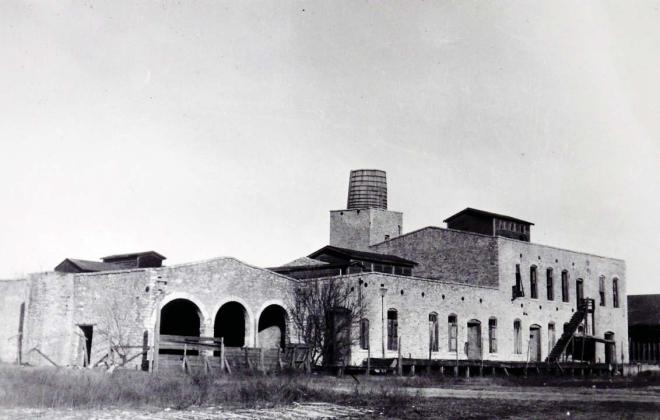A. A. (Gus) Hartgrove, was a wealthy man who came to Dublin about 1890. While here, he married Miss Cora McKinnie who taught school in Dublin. He built the Dublin Oil Mill, later to be known as The Peanut Mill, between 1890 and 1907. He served as a school trustee and served on the board of the Dublin National Bank. He also gave half of the money to build the first rock Methodist Church. (Grand Ol’ Erath, H.G. Grady Perry p 189) With cotton being the main cash crop for Dublin the mill became an important part of the community. We had multiple cotton gins in town so the supply of cotton seeds must have been enough to supply the mill. Additional seeds could be brought in by the railroad that serviced the plant. Hargrove left Dublin in 1907 and not long after that, cotton harvests became less as the cotton plants slowly wore out the soil. Boll Weevils became more of a problem too.
A gentleman named Bencini, in 1917 became the new owner of the mill. He had other mills in the area. He changed it from an oil mill to a peanut processing plant. In the Dublin Progress, August 3, 1917 it stated that only the finest equipment was in place for the venture of processing peanuts. With cotton no longer the major money crop for the area, the new use of the mill would benefit farmers and the town too. (Dublin Progress, August 3, 1917) According to “Covered Wagons Keep On Rollin” a great fire took place in the mill in 1917. It was Dublin’s costliest fire costing over $600,000. A warehouse next to the plant, 350 feet long and 50 feet wide caught fire. Conveyor belts carried the fire all over the building making quite a mess. W. P. Hallmark stayed in the building making sure the fire didn’t breakout again for a month. Mrs. Hallmark sent him food and a change of clothes every day. (Covered Wagons Keep On Rolling, Westphal, p 69) The business must have recovered and continued in operation for a few years. But things changed and by September, 1921 the mill was no longer in operation and the machinery was being dismantled (1921 Sanborn insurance map) It was just as the MKT brick train station was finished, that the Woldert Company bought the mill. The Woldert sign on the sides of the new tower could be seen from much of Dublin. Progress was getting underway with Lee White as the new manager. Peanuts continued to be the cash crop for the area and the new equipment in the mill enhanced Dublin’s product. The company continued to find new markets to sell to. It became the largest peanut shelling plant in the state of Texas.
White knew how to make the best use of the mill, that benefited the Woldert business and the farmers too.
The majestic rock walls of the building are over 100 years old, but still stand proud today. They are a great testament to Dublin’s past and historic turn of the century

